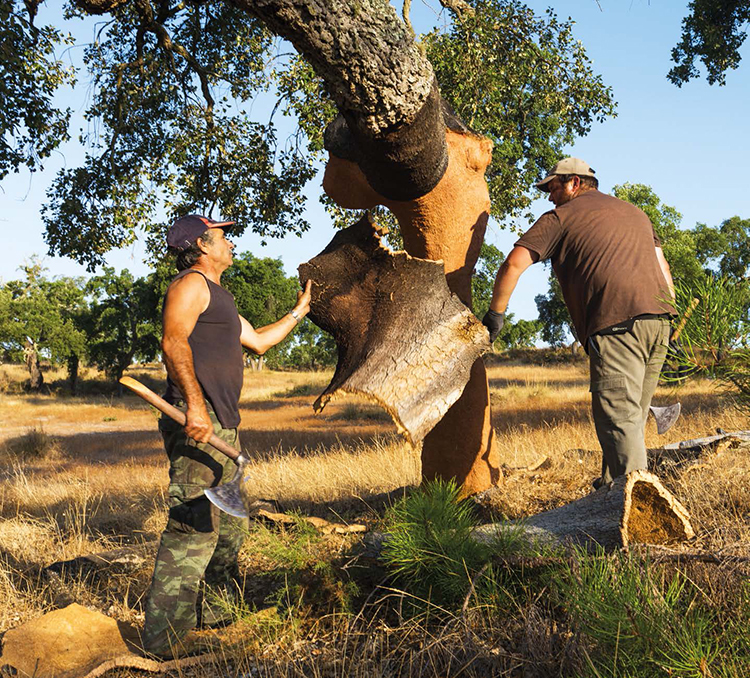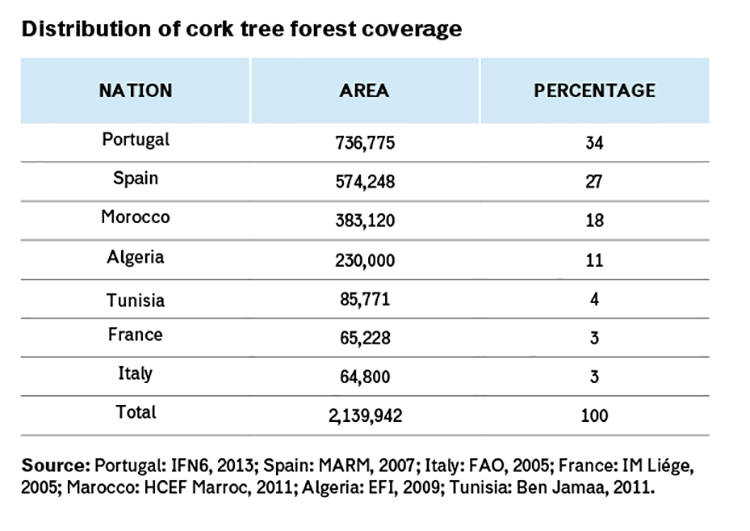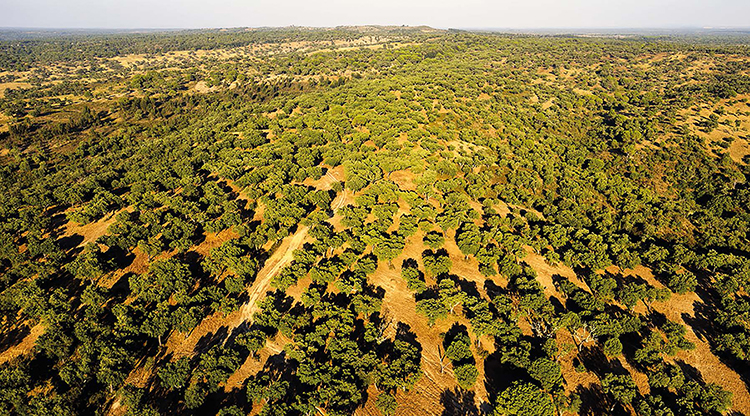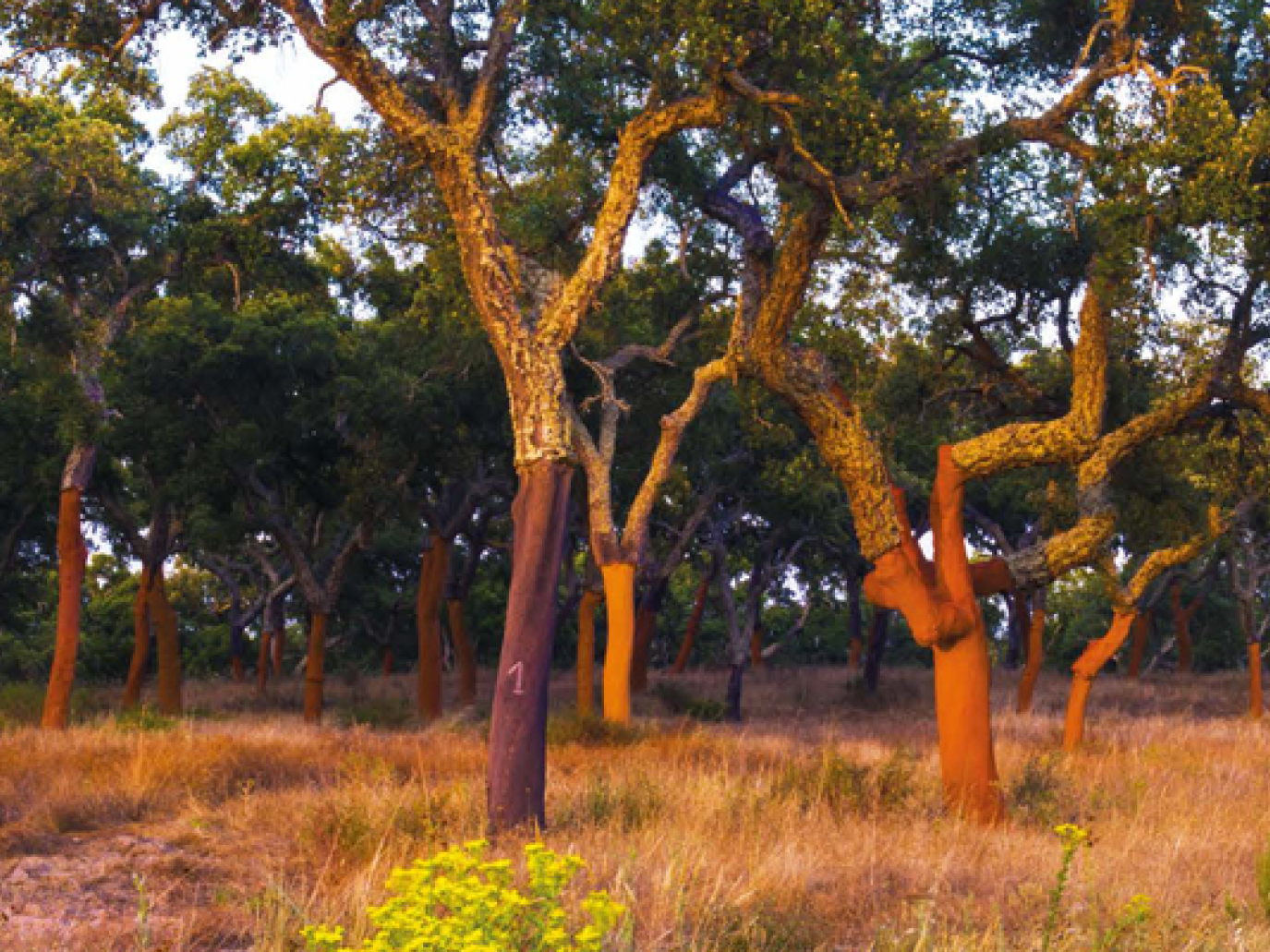Looking at any map of the geographical distribution of cork oak (Quercus Suber L.), what immediately catches the eye is the precise area in which it has spread over time: the Mediterranean basin. The warm and humid climate, characterised by dry summers and mild winters influenced by Atlantic currents, make this the ideal location for the growth and prospering of this very particular plant species. In fact, the cork tree is part of what is defined as a unique ecosystem.
Yes, because Montado, the name given to the agroforestry system in Portugal, is an extremely complex mosaic, that balances different plant and animal species. Including man. Made up of an exiguous number of tree species, intermixed with bushes, fields and farmed land, the Montado is home to entire communities of specimens: Holm Oak (Quercus rotundifolia), Pierrenei Oak (Quercus pyrenaica) and for the most part of cork oak trees. According to data collected by the national forestry inventory, 34% of the entire global presence of cork oak is found in Portugal, amounting to around 736,000 hectares, and around 23% of the entire tree coverage in the country, second only to the eucalyptus tree. An area that has also been included in the Rete Natura 2000 (habitat 9330), an instrument used by the European community to protect biodiversity and the conservation of nature.

A biodiversity reserve
All it takes is a brief walk in a cork oak plantation to understand its ecological value. Here, space and resources are shared between tens of plant and animal species, and it is often possible to find not only small and primitive or semi-primitive farms, but also endemic species: meaning plants that are exclusive to this area which in some regards recalls the African savannah. Like the pardina lynx (Lynx pardinus), now included in the International Union for the Conservation of Nature (IUCN) Red List and hence at risk of extinction. In the heterogeneous foliage of cork oaks the imperial eagle (Aquila adalberti) finds a resting place, as well as other birds of prey such as the short toed eagle (Circaettus gallicus), the booted eagle (Hierattus pennatus), or the Bonelli’s eagle (Hierattus fasciatus). Obviously present thanks to a food chain that is well supplied with small mammals and birds, that often nest in the shrubs. In a particular climate such as that of the Mediterranean, which is even subject to long periods of drought, there are various communities of plant species, supported by different microclimates present in the vicinity of cork oaks, that in turn sustain entire communities of insects and other small animals.

However, among the ecosystem services, meaning all those natural functions that are capable of supporting human activity, cork oak plantations are able to influence the water cycle positively. Cork oaks are perfect allies against desertification and soil degradation. In fact, their roots intercept water at a deeper level than other species, reducing competition for resources. Furthermore, they are able to intercept an average of 26.7% of total precipitation, reducing the quantity of water run-off and preventing the consequent soil erosion. Finally, the fall of organic matter helps increase humus in the soil, which is hence kept stable and healthy.

In recognition of the economic and social value of conservation and responsible management of cork oak forests, to date around 100,000 hectares in Portugal are certified Forest Stewardship Council (FSC) – out of a total 150,000 between Spain, Italy and Portugal. In this way not only have we certified the reduction of impacts on the natural habitats, but there is also an added value to the improvement of conditions of workers and relationships with local communities.



